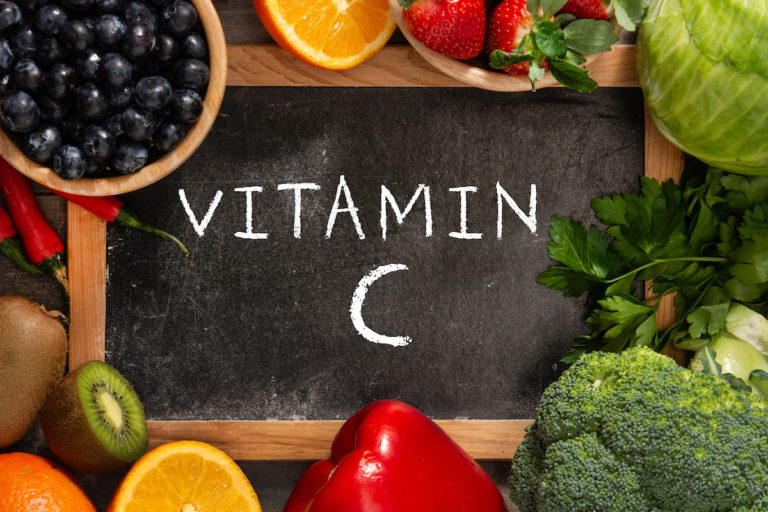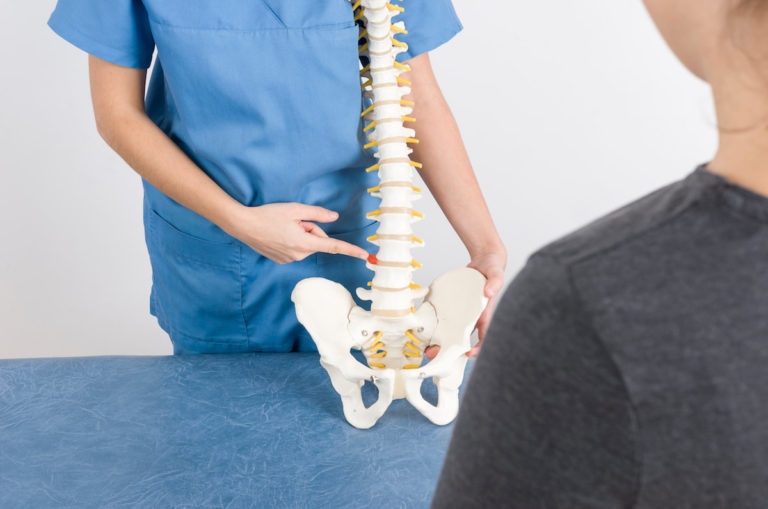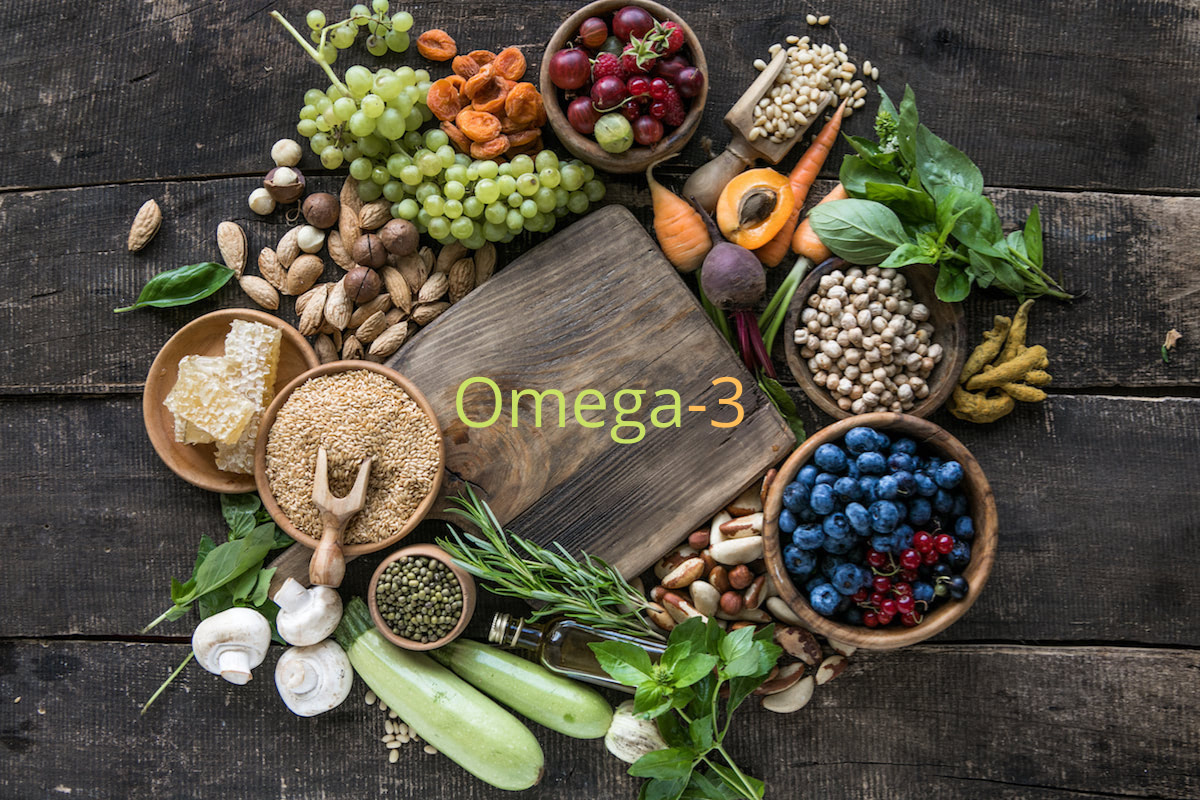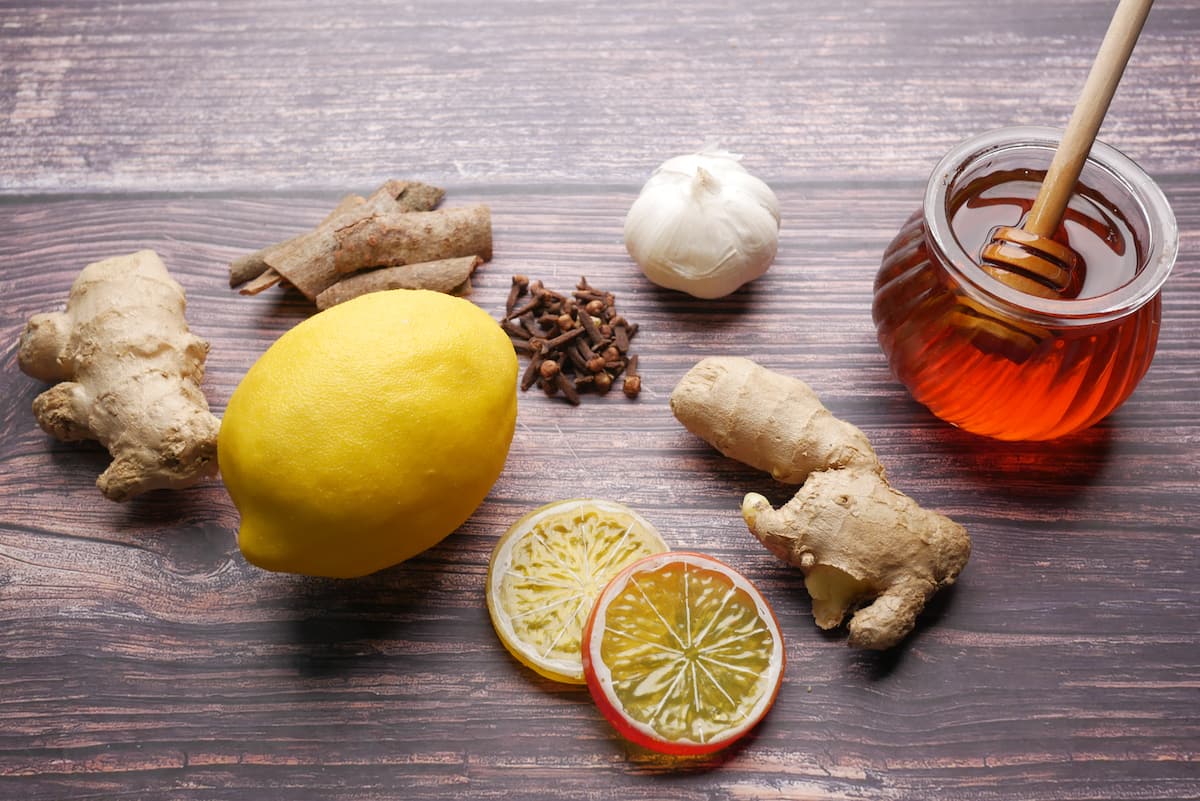Updated on 15. November 2021 from ÁYIO-Q Redaktion
Reading time: approx. 8 minutes
Anti-inflammatory herbs (natural remedies) help prevent osteoarthritis and osteoarthritis pain. Natural remedies can complement the treatment of osteoarthritis, especially in the early stages of osteoarthritis, with the help of a chiropractor. They can have a positive effect on the degenerative process of the joints and on the patient’s condition.
The advantage of phytotherapy in osteoarthritis is that it is not only more resistant than synthetic painkillers, but also has a broader spectrum of action.
The treatment of osteoarthritis with natural remedies is usually not limited in time. When treating osteoarthritis with synthetic painkillers, the addition of natural herbal remedies should also be considered. For many patients, this greatly reduces or even replaces the need for synthetic painkillers.
What medicinal plants for osteoarthritis
Capsaicin:
It is obtained from chilli peppers (Capsicum family).
Other names: Chili, pepper gel, cayenne
What is it?
Capsaicin is the most medicinally active component of chili peppers. It is extracted from the tissue of the plant.
What dose should I use?
Most studies used either 0.025 percent or 0.075 percent capsaicin gel applied to the skin four times daily. Role in the treatment of osteoarthritis and musculoskeletal disorders Capsaicin has been tested for its effect on both osteoarthritis and fibromyalgia. The severity of pain and joint tenderness were significantly reduced in participants who used capsaicin.
Conclusion
Capsaicin, is available over the counter in pharmacies in the form of gel, cream and patches. The results of RCTs (randomized controlled trials) that examined its role in the treatment of osteoarthritis suggest that it is not a major safety concern and is effective in reducing pain and tenderness in affected joints.
Cat’s Claw:
It belongs to the Rubiaceae family
How does it work?
The alkaloid pentacyclic oxyindole is mainly involved in the anti-inflammatory and immunostimulatory effects of medicinal plants. Other ingredients (tetracyclic oxindole alkaloids) may weaken the potency of the plants, but this is usually taken into account in the manufacturing process.
Laboratory studies have found that cat’s claw can prevent the activation of various inflammatory substances in the body. As an antioxidant, it prevents cell damage in the body by interacting with harmful molecules called free radicals that are generated within cells.
Borage seed oil
Herbal remedy from the Boraginaceae family
How does it work?
In addition to its tannic, oleic and palmitic acid content, borage seed oil contains very high amounts of two types of omega-6 polyunsaturated essential fatty acids, 20-26 percent gamma-linolenic acid (GLA) and omega-6 carboxylic acid (LA, which is converted to GLA in the body). Several factors can interfere with the buildup of GLA from LA in the body, including aging, nutritional deficiencies, viral infections, and some diseases. Sunflower oil and other oils generally used in a normal diet contain only LA.
Devil’s Claw:
Herbal remedy from the family of Bignoniaceae and originates from Africa.
How does it work?
Devil’s claw root extract has a positive effect on the pain of osteoarthritis. Pain is relieved, start-up pain and the typical morning stiffness subside and the consumption of synthetic painkillers can be significantly reduced by taking devil’s claw extract.
The effect of devil’s claw lasts even after the treatment is discontinued. Devil’s claw extract has long-term effects on osteoarthritis pain, is very well tolerated and is therefore suitable for the long-term treatment of osteoarthritis pain.
It has not yet been fully researched how devil’s claw works. The anti-inflammatory properties are attributed to its active ingredient, harpagoside, but studies have shown that the analgesic properties cannot be explained by this ingredient alone
The use of devil’s claw should be continued for at least 12 weeks before it takes full effect. Patients with gallstones should not use devil’s claw. You should discuss devil’s claw treatment with your doctor or orthopedist. You may need to change the use of other medications if you are taking devil’s claw.
Fish oil:
Food supplements
Other names: fish body oil and/or cod liver oil
How does it work?
First, they significantly decrease the release of several pro-inflammatory elements from white blood cells. Second, they form the building blocks for prostaglandins. Omega-3 fatty acids also play a role in lowering blood cholesterol and triglyceride levels, reducing the risk of heart disease and stroke in people with inflammatory arthritis.
Flaxseed oil:
Food as oil
How does it work?
Flaxseed oil contains omega-3 carboxylic acid (ALA), an essential omega-3 acid. It is anti-inflammatory and anti-barterial.
One teaspoon pure per day, or add to yogurt, cottage cheese or salad.
Note: Flaxseed oil is not suitable for fried foods!
Ginger:
Herbal remedy from the ginger family (Zingiberaceae – including turmeric and cardamom) and grows in tropical and subtropical areas.
How does it work?
Some laboratory studies have found that ginger extracts can reduce the accumulation of several chemical substances (including leukotrienes) that promote joint inflammation. Ginger also contains salicylates, which are converted by the body into a chemical called salicylic acid. Salicylic acid inhibits the accumulation of certain prostaglandins within the nerves and this relieves pain and discomfort.
According to a Danish study (2015), oral therapy with ginger can significantly reduce both pain and limited mobility in osteoarthritis of the knee or hip.
Dose: juice of fresh ginger 5 – 10 ml / raw ginger 1 – 2 g
Glucosamine:
Food supplements
How does it work?
Glucosamine occurs naturally in the body. It plays an important role in the production of glycosaminoglycans and glycoproteins, which are essential building blocks of the various structures of the joints, including ligaments, tendons, cartilage and synovium (synovial fluid). It is believed that the way joint structures are built and maintained contributes to the development and thus progression of osteoarthritis. Laboratory tests have shown that the administration of glucosamine can delay the breakdown of cartilage and also rebuild it. For the production of food supplements, glucosamine is mainly extracted from crustaceans.
What vitamins for osteoarthritis
Vitamins A, C and E (antioxidant vitamins)
How do they work?
They have antioxidant properties.
vitamin A
Is a reliable antioxidant, which means it can prevent cell damage in the body by interacting with free radicals, harmful molecules produced in cells.
vitamin C
Studies on vitamin C have found that it can stimulate the building of collagen and proteoglycan (both important components of joint cartilage) and protect against the breakdown of cartilage.
vitamin E
Some laboratory studies have shown that vitamin E has the potential to treat osteoarthritis by stimulating the expansion of cartilage cells. Other studies have also found that it has some anti-inflammatory properties.
Vitamin D (fat-soluble vitamin)
How does it work?
Vitamin D plays an important role in building proteoglycan in cartilage and helps ensure a healthy system.
In food, it is found mainly in fatty fish or is added to food as a dietary supplement. It has the function of a prohormone in the body and is converted via an intermediate stage to the active steroid hormone calcitrol.
Vitamin D plays an essential role in the regulation of calcium levels in the blood and in bone formation. Possible health consequences of vitamin D deficiency (such as osteoarthritis) are the subject of current scientific research.
Vitamin B complex (non-antioxidant vitamins)
How does it work?
Several studies have found that vitamin B12 plays a role in regulating bone metabolism. Another study found that people with osteoarthritis have a low intake of vitamin B9 (folic acid).
What minerals for osteoarthritis
MSM – Organic Sulphur
Food mineral
Scientific name: Methylsulfonylmethane
Methylsulfonylmethane, also known as dimethylsulfone, is found in fresh, raw foods such as fruits, vegetables, and meats. The therapeutic composition of MSM is a white crystalline substance containing 34 percent sulfur.
How does it work?
Laboratory studies have shown that MSM has anti-inflammatory and antioxidant effects. Sulphur, which is an important component of MSM, plays an important role in the production of collagen and glucosamine, both of which are essential for healthy bones and joints, as well as in the formation of immunoglobulins, which perform many important services in the body.
Zinc, selenium, copper and manganese
These minerals not only promote connective tissue metabolism, but can even prevent cartilage degradation. They have anti-inflammatory effects. Zinc is found in fish and meat, selenium especially in nuts and seeds. Foods rich in copper include oats, legumes and liver. Oats and wheat germ are rich in manganese.
Seven nutrition tips that can help recover from osteoarthritis
Dietary changes can help many people with arthritis, both inflammatory types and osteoarthritis.
Fat fish
Fatty fish, those with a fat content of over 10% %, been shown to have a strong anti-inflammatory effect.Fish is also a reliable source of vitamin D, which can help prevent deficiency. Several studies have found that rheumatoid arthritis may be associated with low vitamin D levels, which could contribute to symptoms.
| Fat Fish | Fat content in g/100g | Variation g/10 |
| Salmon (Salm) | 13,6 | 12,5 – 16,5 |
| Tuna | 15,5 | 4,2 – 24,0 |
| Catfish | 11,3 | 3,4 – 19,9 |
| Herring (Atlantic Ocean) | 17,8 | 9,9 – 19,4 |
| Herring (Baltic herring) | 9,2 | 3,6 – 14,1 |
| Mackerel | 11,9 | 5,2 – 20,2 |
| Buttermackerel | 23,2 | – |
| Sprat | 16,6 | 3,6 – 20,6 |
| Greenland halibut (Greenland halibut) | 10,1 | 9,4 – 15,6 |
| Spurdog (spiny dogfish) | 14,5 | – |
| Eel | 24,5 | 18,3 –27,8 |
Garlic
In some test tube studies, garlic and its constituents have been shown to have anticancer properties. They also contain compounds that can reduce the risk of heart disease and dementia. Additionally, garlic has been shown to have an anti-inflammatory effect that can help reduce symptoms of osteoarthritis.
Ginger
Not only does it add flavor to teas, soups and sweets, but it can also help alleviate the symptoms of arthritis. A test tube study also found that ginger and its constituents block the buildup of drugs that promote inflammation in the body.
Broccoli
It contains important components that could help reduce symptoms of osteoarthritis. For example, sulforaphane has been found as a component in broccoli. Test tube studies have shown that it blocks the formation of a type of cell involved in osteoarthritis development.
Walnuts
They are nutrient-dense and rich in compounds that can help reduce inflammation associated with joint disease. Walnuts are particularly rich in omega-3 fatty acids, which have been shown to reduce the symptoms of osteoarthritis.
Blueberries
Tons of antioxidants, vitamins, and minerals are in every serving of blueberries, which may be partly responsible for their unique ability to reduce inflammation.
Grapes
They have anti-inflammatory properties. In addition, grapes contain several compounds that have been shown to be beneficial in the treatment of osteoarthritis. For example, resveratrol is an antioxidant found in the skin of grapes.
Notice:
The causes of osteoarthritis are extremely diverse. They range from orthopedic deformities and genetic causes to poorly treated sports or accidental injuries.
People with orthopaedic symptoms related to osteoarthritis should therefore only take herbal remedies or other treatments under specialist advice and medical supervision. If joint dislocation or accidental cartilage damage is the cause of osteoarthritis, self-treatment without an accurate diagnosis can be a valuable waste of time. It may take some time for a qualified chiropractor to save the joint through specific treatment.
Related articles: Osteoarthritis
- Osteoarthritis – clinical picture, causes and symptoms
- Osteoarthritis – Alternative treatment options
- Osteoarthritis – How emotions influence osteoarthritis
Sources:
[1] Randall C, Randall H, Dobbs F, Hutton C, Sanders H. Randomised controlled trial of nettle sting for treatment of base-of-thumb pain. Journal of the Royal Society of Medicine 2000; 93(6):305–09.
[2] Randall C, Dickens A, White A, Sanders H, Fox M, Campbell J. Nettle sting for chronic knee pain: a randomised controlled pilot study. Complementary Therapies in Medicine 2008; 16(2):66-72.
[3] Canter PH, Wider B, Ernst E. The antioxidant vitamins A, C, E and selenium in the treatment of arthritis: a systematic review of randomised clinical trials. Rheumatology (Oxford) 2007; 46(8):1223-33.
[4] Najm WI, Reinsch S, Hoehler F, Tobis JS, Harvey PW. S-adenosyl methionine (SAMe) versus celecoxib for the treatment of osteoarthritis symptoms: a double-blind cross-over trial. BMC Musculoskeletal Disorders 2004; 26:5-6.
[5] Kim J, Lee EY, Koh E, Cha H, Yoo B, Lee CK, Lee YL, Ryu H, Lee KH, Song YW. Comparative clinical trial of S-adenosylmethionine versus nabumetone for the treatment of knee osteoarthritis: an 8-week, multicenter, randomised, double-blind, double-dummy, phase IV study in Korean participants. Clinical Therapeutics 2009; 31(12):2860-72.
[6] Soeken KL, Lee WL, Bausell RB, Agelli M, Berman BM. Safety and efficacy of S- adenosylmethionine (SAMe) for osteoarthritis. Journal of Family Practice 2002; 51(5):425- 30.
[7] Sarac AJ, Gur AJ. Complementary and alternative medical therapies in fibromyalgia. Current Pharmaceutical Design 2006; 12(1):47-57.
[8] [https://www.ncbi.nlm.nih.gov/pubmed/27353735
[9] https://www.ncbi.nlm.nih.gov/pubmed/23934131
[10] https://www.ncbi.nlm.nih.gov/pmc/articles/PMC5295114/
[11] Welche Pflanzen helfen gegen Arthrose, at https://gelenk-doktor.de, Access date 15.07.2021
[12] Nährstoffe und Arthrose, auf https://www.gelenke-brauchen-mehr.de, , Access date 15.07.2021















